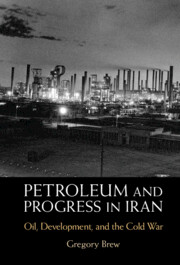Introduction
Published online by Cambridge University Press: 15 December 2022
Summary
It was May 1964 and Hossein Mahdavy had run out of patience. The Iranian economist, known by his colleagues as a brilliant though hot-headed nationalist, held a high-ranking position in Iran’s esteemed Economic Bureau. He worked alongside economists, budget analysts, and statisticians – Iran’s best and brightest – to prepare a development program, the Third Plan, budgeted at $1 billion. The plan would tap Iran’s oil revenues, a stream of wealth worth $400 million per year, to kick-start the economy and stabilize the regime of Iran’s shah, Mohammed Reza Pahlavi (Figure 0.1). The bureau received help from a team of American advisors, sent to Iran with the backing of the Kennedy administration, which worried about the shah’s shaky grip on power. Mahdavy and his colleagues toiled away at the Third Plan under the watchful eye of American developmentalists who regarded the final plan outline as “the best drafted piece of legislation” in Iran’s modern history.1 The plan was a blueprint for Iran’s future, and like many educated Iranians, Mahdavy hoped that future would include a transition away from authoritarianism toward liberal secular democracy. In May 1961, under US pressure, the shah appointed a reformer prime minister. In January 1962, he approved the Third Plan.
- Type
- Chapter
- Information
- Petroleum and Progress in IranOil, Development, and the Cold War, pp. 1 - 18Publisher: Cambridge University PressPrint publication year: 2022

